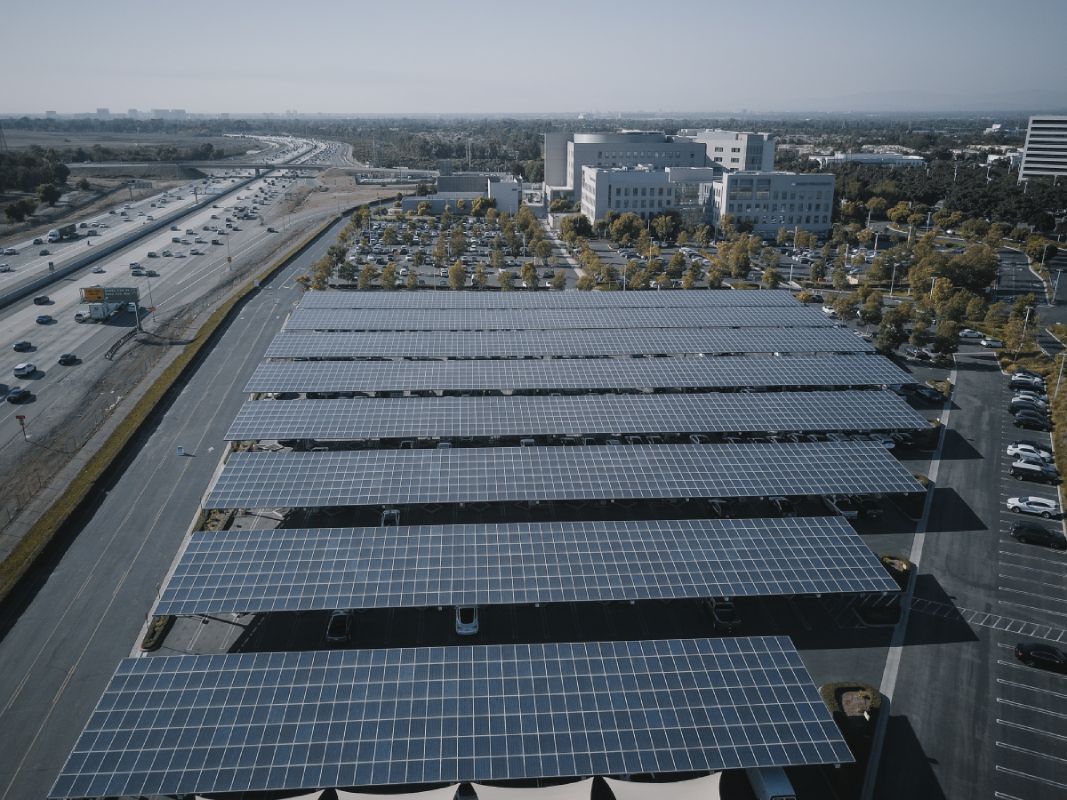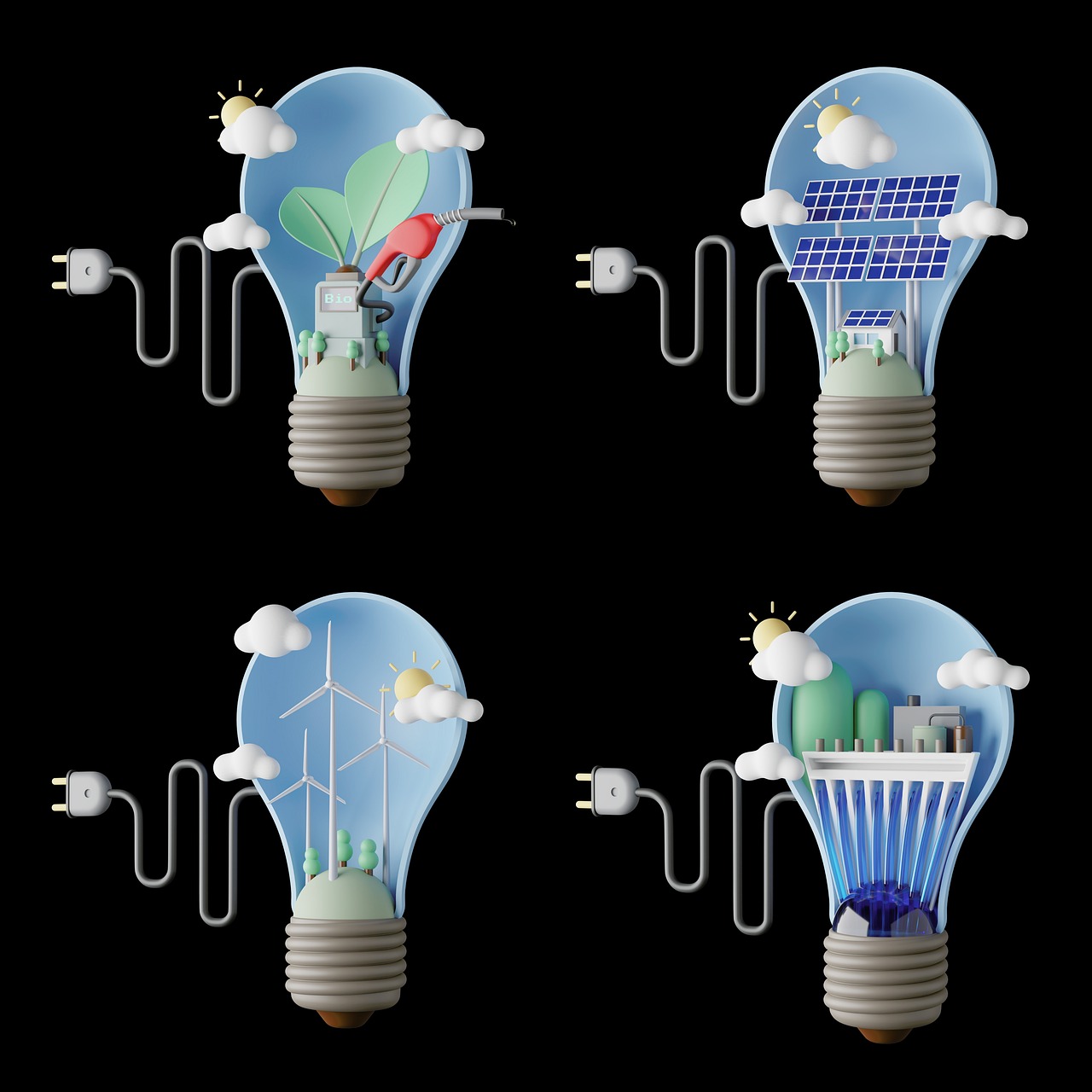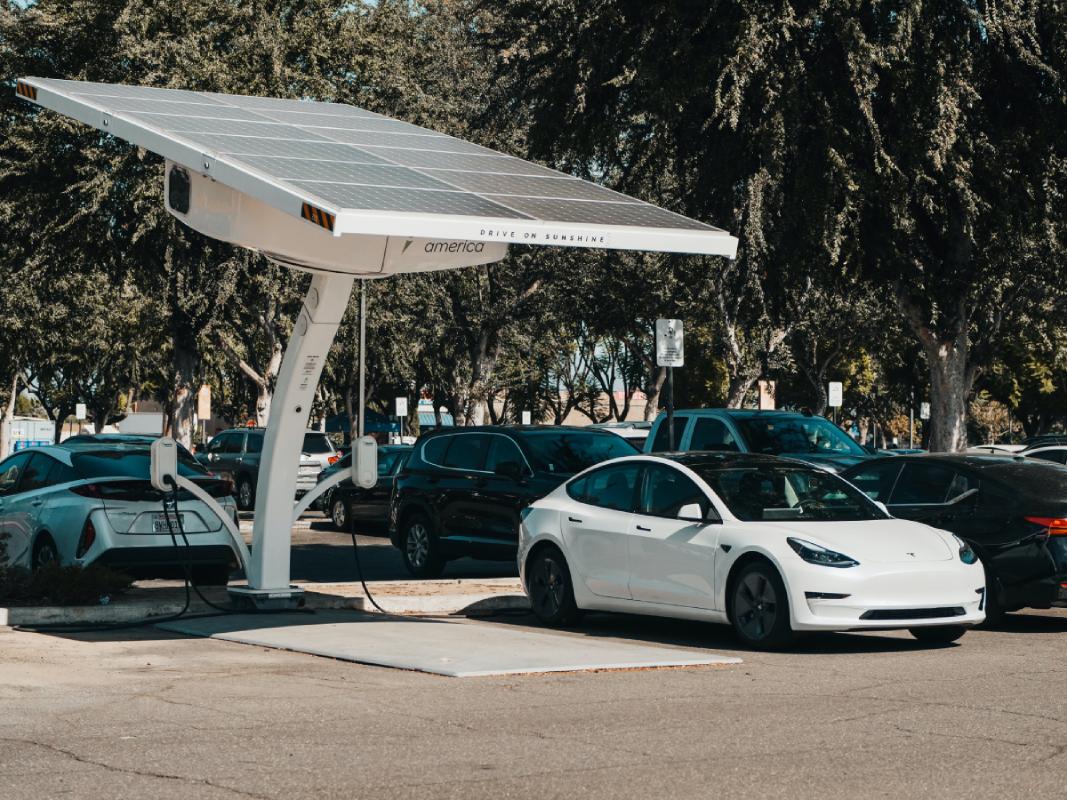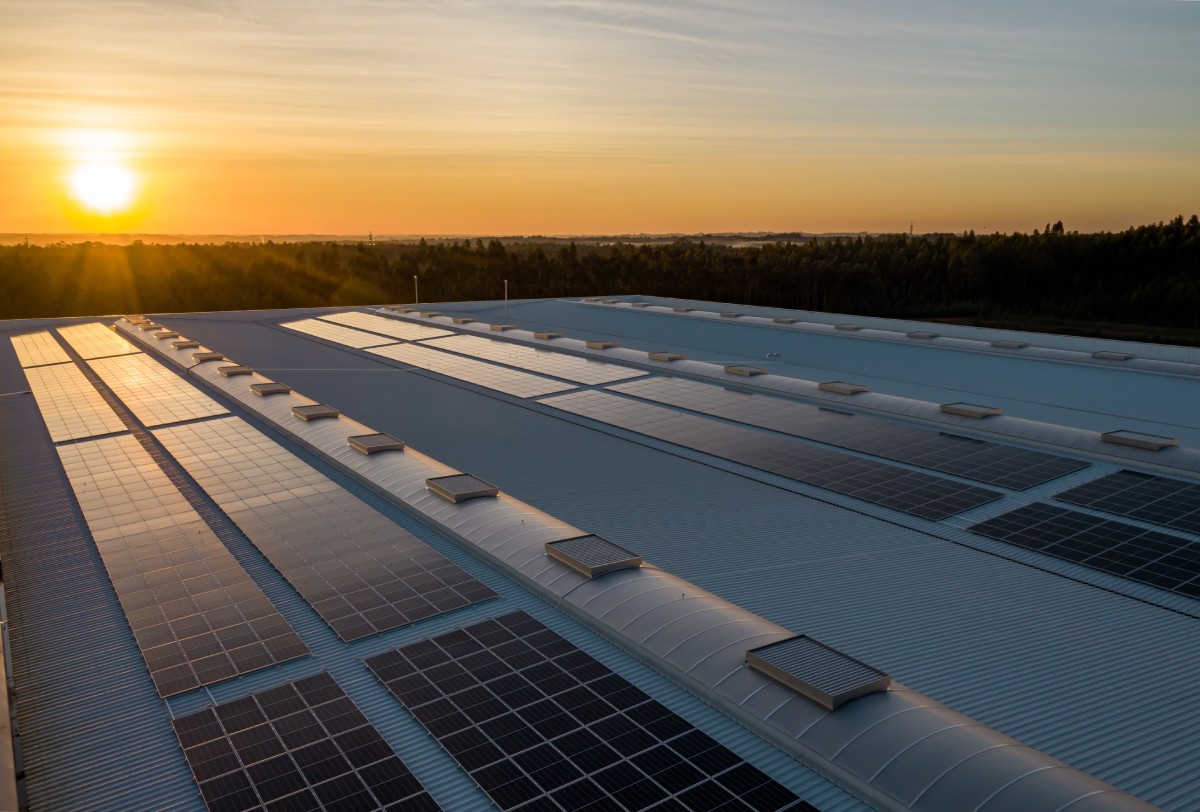Introduction
As the global climate change crisis intensifies, the need for urgent action becomes more apparent than ever. Burning fossil fuels and releasing greenhouse gases into the atmosphere have led to rising temperatures, extreme weather events, and many environmental and societal challenges. In this context, transitioning to renewable energy sources is vital in combatting climate change and forging a sustainable future.
Brief Overview of the Global Climate Change Crisis
The global climate change crisis is characterized by the warming of the Earth’s atmosphere, primarily caused by human activities. The excessive burning of fossil fuels such as coal, oil, and natural gas for energy production, transportation, and industrial processes has led to a significant increase in carbon dioxide (CO2) and other greenhouse gas emissions. These emissions trap heat within the atmosphere, causing the planet to warm rapidly.
The consequences of climate change are far-reaching and impactful. Rising global temperatures have resulted in the melting of polar ice caps, the loss of biodiversity, and the disruption of ecosystems. Moreover, extreme weather events like hurricanes, droughts, and heatwaves have become more frequent and severe, posing risks to human lives, infrastructure, and food production. The urgency to address climate change and its effects has never been more critical.
Importance of Transitioning to Renewable Energy Sources
Transitioning from fossil fuels to renewable energy sources is essential to address the climate change crisis effectively. Renewable energy refers to energy generated from naturally replenished sources, such as sunlight, wind, water, and geothermal heat. Unlike fossil fuels, which deplete natural resources and release harmful emissions, renewable energy offers a sustainable and clean alternative.
One of the primary benefits of renewable energy is its minimal carbon footprint. Solar energy harnesses the power of the sun to generate electricity, while wind energy utilizes wind turbines to convert wind power into usable energy. Hydropower harnesses the energy from flowing water, and geothermal energy taps into the Earth’s heat. These sources produce little to no greenhouse gas emissions during operation, thereby significantly reducing carbon emissions and mitigating climate change.
Transitioning to renewable energy sources also offers economic opportunities and energy independence. Investing in renewable energy technologies creates jobs, stimulates local economies, and fosters innovation. Moreover, renewable energy is abundant and widely available, reducing reliance on fossil fuel imports and increasing energy security.
In addition to combating climate change, renewable energy sources offer other environmental benefits. They help reduce air pollution, improve public health, and conserve water resources. Renewable energy systems promote decentralized energy production, empowering communities to generate clean and sustainable power.
By transitioning to renewable energy sources, we can reduce greenhouse gas emissions, mitigate the impacts of climate change, create a sustainable energy future, and ensure a livable planet for future generations. It is a crucial step towards combating climate change and fostering a more resilient and sustainable world.
Understanding Renewable Energy
Renewable energy is crucial in combatting climate change by offering sustainable and clean alternatives to fossil fuels. This section will explore the definition and explanation of renewable energy, provide an overview of various renewable energy sources, and differentiate them from fossil fuels.

Definition and Explanation of Renewable Energy
Renewable energy is derived from naturally replenished, virtually inexhaustible sources on a human timescale. Unlike fossil fuels, which are finite and non-renewable, renewable energy sources can be continuously harnessed without depleting their availability for future generations. These energy sources include sunlight, wind, water, geothermal heat, and biomass.
Renewable energy technologies convert these abundant resources into usable forms of energy, such as electricity or heat, while minimizing negative environmental impacts. By harnessing renewable energy, we can significantly reduce greenhouse gas emissions and mitigate the harmful effects of climate change.
Overview of Various Renewable Energy Sources
-
Solar Energy: Solar energy harnesses the power of the sun to generate electricity or heat. Photovoltaic (PV) systems convert sunlight directly into electricity, while solar thermal systems use the sun’s energy to heat water or air. Solar energy is abundant, clean, and widely accessible, making it one of the fastest-growing renewable energy sources.
-
Wind Energy: Wind energy utilizes wind turbines to convert the kinetic energy of the wind into electricity. As the wind blows, it rotates the turbine’s blades, driving a generator to produce power. Wind energy is clean, abundant, and has the potential to generate large amounts of electricity, especially in areas with consistent wind patterns.
-
Hydropower: Hydropower, also known as hydroelectric power, harnesses the energy of flowing or falling water to generate electricity. It involves capturing the energy of moving water using turbines, which drive generators to produce electricity. Hydropower is a mature and reliable renewable energy source, with large-scale projects often found in rivers, dams, and tidal areas.
-
Geothermal Energy: Geothermal energy utilizes the heat stored within the Earth’s crust to generate power. Tapping into hot water or steam reservoirs underground allows geothermal power plants to produce electricity and heat for various applications. Geothermal energy is reliable, available 24/7, and emits minimal greenhouse gas emissions.
-
Biomass: Biomass energy utilizes organic materials, such as wood, agricultural residues, and dedicated energy crops, to generate heat or electricity. Biomass can be burned directly or converted into biofuels, biogas, or biochemicals. It is a versatile renewable energy source that can help reduce waste, provide heat in rural areas, and contribute to a more sustainable energy mix.
Differentiating Renewable Energy from Fossil Fuels
Renewable energy sources differ from fossil fuels in several vital aspects. While fossil fuels, such as coal, oil, and natural gas is formed from ancient organic matter and takes millions of years to replenish renewable energy sources are constantly replenished by biological processes, making them sustainable and virtually inexhaustible.
Furthermore, renewable energy sources produce little to no greenhouse gas emissions during their operation, contributing significantly less to climate change than fossil fuels. Fossil fuel combustion releases large amounts of carbon dioxide (CO2) and other greenhouse gases, which trap heat in the Earth’s atmosphere and contribute to global warming.
In contrast, renewable energy sources have a minimal carbon footprint. Solar, wind, hydropower, geothermal, and biomass energy systems generate electricity without emitting significant greenhouse gases. This distinction makes renewable energy an essential component of efforts to mitigate climate change and transition to a low-carbon future.
By embracing renewable energy sources and reducing our dependence on fossil fuels, we can take significant strides towards combatting climate change, reducing air pollution, promoting energy security, and fostering a sustainable and resilient future.
Environmental Benefits of Renewable Energy
Renewable energy is vital in combatting climate change by offering significant environmental benefits. In this section, we will explore how renewable energy helps reduce greenhouse gas emissions, mitigate air and water pollution, and preserve natural resources.

Reduction of Greenhouse Gas Emissions
One of renewable energy’s most significant environmental benefits is its ability to reduce greenhouse gas emissions. Unlike fossil fuel-based energy sources that release large amounts of carbon dioxide (CO2) and other greenhouse gases when burned, renewable energy sources produce little to no emissions during their operation.
For example, solar power systems harness energy from the sun using photovoltaic (PV) panels, converting sunlight directly into electricity without any emissions. Similarly, wind turbines generate electricity by harnessing the kinetic energy of the wind, producing no greenhouse gas emissions.
By shifting our reliance from fossil fuels to renewable energy sources, we can significantly decrease the amount of CO2 and other greenhouse gases released into the atmosphere. This reduction in emissions helps mitigate the greenhouse effect and the subsequent warming of the planet, contributing to efforts to combat climate change.
Mitigation of Air and Water Pollution
Renewable energy sources also play a crucial role in mitigating air and water pollution. Fossil fuel combustion releases various pollutants into the atmosphere, damaging air quality and public health. In contrast, renewable energy systems have minimal to no emissions, resulting in cleaner air.
For instance, traditional power generation from coal releases not only CO2 but also harmful pollutants like sulfur dioxide (SO2), nitrogen oxides (NOx), and particulate matter. These pollutants contribute to smog, acid rain, and respiratory problems. By transitioning to renewable energy sources, we can reduce these harmful emissions and improve air quality, creating healthier community environments.
Moreover, renewable energy systems have a significantly lower impact on water resources compared to fossil fuel-based power plants. The extraction, processing, and combustion of fossil fuels require vast amounts of water, which can strain water supplies and harm aquatic ecosystems. Renewable energy technologies, such as solar and wind, have minimal water usage, helping preserve this vital resource.
Preservation of Natural Resources
Renewable energy sources contribute to the preservation of natural resources, which are often depleted or irreversibly damaged through the extraction and consumption of fossil fuels. Fossil fuel extraction involves mining, drilling, and fracking, which can disrupt ecosystems, destroy habitats, and lead to environmental degradation.
In contrast, renewable energy sources harness energy from renewable resources such as sunlight, wind, and water, which are abundant and readily available. Utilizing these sustainable resources can reduce our reliance on finite fossil fuel reserves and protect natural landscapes, wildlife habitats, and sensitive ecosystems.
Furthermore, developing renewable energy infrastructure can lead to land repurposing and the restoration of degraded areas. For example, solar farms can be installed on previously unused or contaminated land, providing a new lease of life to these areas while generating clean energy.
In conclusion, renewable energy offers significant environmental benefits by reducing greenhouse gas emissions, mitigating air and water pollution, and preserving natural resources. By embracing renewable energy technologies, we can make significant strides toward a sustainable and resilient future where clean energy is crucial in combatting climate change and protecting our planet.
Renewable Energy Technologies
Renewable energy technologies are at the forefront of the global effort to combat climate change. In this section, we will explore some of the prominent renewable energy sources and their contributions to a sustainable and low-carbon future.

Solar Power: Capturing Energy from the Sun
Solar power is a renewable energy technology that harnesses the abundant energy from the sun to generate electricity. Solar photovoltaic (PV) systems use solar panels made of semiconducting materials to convert sunlight directly into electricity through the photovoltaic effect.
The process starts with sunlight striking the solar panels, which excites the electrons in the semiconducting material, generating a flow of electrical current. This clean and sustainable energy can power homes, businesses, and communities.
Solar power offers several advantages. First and foremost, it is a virtually inexhaustible source of energy. The sun provides an immense amount of energy to Earth every day, and by harnessing just a fraction of this energy, we can meet a significant portion of our electricity needs. Additionally, solar power systems produce no greenhouse gas emissions during operation, creating a cleaner and healthier environment.
Wind Power: Harnessing the Power of Wind Turbines
Wind power is another widely recognized renewable energy technology that harnesses the power of the wind to generate electricity. Wind turbines, consisting of large rotor blades connected to a generator, capture the kinetic energy of the current and convert it into electrical energy.
As the wind blows, it causes the rotor blades to rotate, spinning the generator and producing electricity. Wind farms, multiple wind turbines installed in suitable locations can generate substantial clean energy.
Wind power has several benefits. It is a clean and abundant energy source that does not produce greenhouse gas emissions or air pollutants during operation. Wind farms can be installed onshore and offshore, utilizing areas with consistent and strong winds. Moreover, wind power projects can benefit local communities economically by creating jobs and stimulating local economies.
Hydropower: Utilizing Water Flow to Generate Electricity
Hydropower is a renewable energy technology that harnesses the energy of flowing or falling water to generate electricity. It utilizes the gravitational force of water to spin turbines connected to generators, converting the mechanical energy of water into electrical energy.
Hydropower systems can range from large-scale hydroelectric dams to small-scale run-of-river installations. In large-scale hydropower projects, dams control water flow, creating reservoirs and ensuring a steady supply of water to the turbines. In run-of-river systems, the natural flow of rivers is utilized without the need for extensive dam infrastructure.
Hydropower offers several advantages as a renewable energy source. It is a reliable and mature technology with a long history of successful implementation. Hydropower plants can provide a consistent and predictable electricity supply, contributing to grid stability. Furthermore, hydropower projects often offer additional benefits such as flood control, irrigation, and recreational opportunities.
Biomass and Bioenergy: Deriving Energy from Organic Matter
Biomass and bioenergy technologies involve converting organic matter, such as plant biomass and agricultural residues, into usable energy forms. Biomass can be burned directly to produce heat or used in advanced biofuel production processes to generate electricity, heat, or transportation fuels.
Biomass energy technologies are considered renewable because the organic matter used for energy production can be replenished through sustainable practices. Using biomass can reduce reliance on fossil fuels while simultaneously managing organic waste and promoting a circular economy.
Biomass and bioenergy offer several benefits. They provide an alternative to fossil fuels and contribute to reducing greenhouse gas emissions. Additionally, bioenergy technologies can be integrated with other industries, such as agriculture and forestry, creating opportunities for rural development and job creation.
In conclusion, renewable energy technologies, including solar power, wind power, hydropower, and biomass/bioenergy, are crucial in the fight against climate change. By harnessing the power of these sustainable sources, we can reduce greenhouse gas emissions, diversify our energy mix, and create a more resilient and sustainable energy future.
Renewable Energy in Action: Global Initiatives and Success Stories
Renewable energy has gained significant traction worldwide, with numerous countries leading the way in adopting sustainable energy solutions. In this section, we will explore some of these global initiatives and highlight success stories demonstrating renewable energy’s positive impact on local communities and economies.

Overview of Countries Leading in Renewable Energy Adoption
Several countries have made remarkable progress in transitioning to renewable energy sources and have become leaders in the global renewable energy landscape. One such country is Germany, which has made substantial investments in solar and wind power, resulting in a significant share of its electricity generation coming from renewable sources. Denmark is another frontrunner, with its wind energy sector playing a crucial role in meeting the country’s electricity demand.
Other countries actively pursuing renewable energy include China, the world’s largest installer of solar and wind capacity, and the United States, which has made significant strides in expanding its renewable energy portfolio. Countries like Costa Rica, Iceland, and Uruguay have also achieved impressive milestones by generating a substantial portion of their electricity from renewable sources.
Case Studies Showcasing Successful Renewable Energy Projects
Numerous successful renewable energy projects worldwide exemplify how clean energy technologies can transform communities and contribute to the fight against climate change. One notable case is the Tengger Desert Solar Park in China is the largest solar power plant in the world. With a capacity exceeding 1,500 megawatts, the solar park provides clean electricity to millions of people while reducing carbon emissions.
Another inspiring project is the Horns Rev 3 offshore wind farm in Denmark. This wind farm has a capacity of 407 megawatts and supplies clean energy to approximately 425,000 Danish households. By harnessing wind power, the project contributes to Denmark’s ambitious goal of becoming carbon-neutral by 2050.
In South America, Uruguay has made significant progress in renewable energy adoption. Through a combination of wind, solar, and biomass projects, the country has achieved an impressive 98% renewable electricity generation. This transition has reduced carbon emissions, bolstered Uruguay’s energy independence, and provided economic opportunities.
Positive Impacts on Local Communities and Economies
Renewable energy initiatives have wide-ranging positive impacts on local communities and economies. The shift towards renewable energy creates job opportunities in the clean energy sector, ranging from manufacturing and installation to maintenance and research. This job growth stimulates local economies and promotes sustainable development.
Moreover, renewable energy projects often involve community engagement and participation. Local communities can benefit from reduced energy costs, improved energy access, and increased resilience. For instance, off-grid solar installations in rural areas provide clean and affordable electricity to communities previously underserved by traditional grid infrastructure.
Renewable energy also enhances energy security by diversifying the energy mix and reducing dependence on imported fossil fuels. This increased energy self-sufficiency strengthens national resilience and minimizes the vulnerability of economies to fluctuations in fossil fuel prices.
In conclusion, global initiatives and success stories demonstrate the transformative power of renewable energy. Countries leading in renewable energy adoption and successful projects worldwide exemplify the positive impact of clean energy on local communities, economies, and the global fight against climate change. By embracing renewable energy, we can create a sustainable and resilient future for generations to come.
Economic Advantages of Renewable Energy
Renewable energy plays a crucial role in combatting climate change and brings about significant economic advantages. In this section, we will explore how renewable energy contributes to job creation, economic growth, cost competitiveness, and energy independence.

Job Creation and Economic Growth
The renewable energy sector has emerged as a significant job creation and economic growth driver. As the demand for clean energy technologies increases, so does the need for skilled professionals in various fields. Job opportunities arise in renewable energy installation, equipment manufacturing such as solar panels and wind turbines, research and development, project management, and maintenance.
These jobs span across different skill levels, offering employment opportunities for engineers, technicians, construction workers, and project managers. By investing in renewable energy, governments and businesses stimulate economic activity, attract investments, and foster innovation. The growth of the renewable energy sector contributes to the overall economic development of regions and nations.
Cost Competitiveness and Long-Term Financial Benefits
Renewable energy technologies have experienced significant cost reductions, making them increasingly competitive with traditional fossil fuel-based energy sources. The falling costs of solar panels, wind turbines, and energy storage systems have made renewable energy more accessible and affordable.
Furthermore, renewable energy projects offer long-term financial benefits. Once the initial investment is made, the operational costs of renewable energy facilities are relatively low. Solar and wind power, for example, have minimal fuel costs compared to the ongoing expenses associated with fossil fuel power plants. This cost stability provides economic certainty, shielding energy consumers from the volatility of fossil fuel prices.
Renewable energy projects also provide opportunities for revenue generation. Through feed-in tariffs, power purchase agreements, and net metering programs, individuals and businesses can generate income by selling excess energy back to the grid or reducing their energy bills. This financial incentive encourages the adoption of renewable energy and empowers individuals and communities to become active participants in the clean energy transition.
Energy Independence and Resilience
Renewable energy contributes to energy independence and enhances the resilience of nations and communities. By diversifying the energy mix, countries can reduce their dependence on imported fossil fuels, minimizing the economic and geopolitical risks associated with volatile energy markets.
Moreover, renewable energy sources are often distributed, enabling decentralized power generation. This decentralized approach increases energy resilience by reducing the vulnerability of energy systems to natural disasters, cyber-attacks, or disruptions in fuel supply chains. Localized renewable energy installations, such as rooftop solar panels and community-owned wind farms, enhance energy security and empower communities to generate their own clean energy.
In conclusion, renewable energy offers substantial economic advantages. It drives job creation, fosters economic growth, and contributes to a more competitive and sustainable energy market. The decreasing costs of renewable energy technologies and the long-term financial benefits they provide make them attractive investments. Furthermore, renewable energy systems’ energy independence and resilience strengthen the stability and security of nations and communities. By embracing renewable energy, we can simultaneously address climate change and build a prosperous and sustainable future.
Overcoming Challenges and Barriers
While renewable energy holds immense potential in combatting climate change, several challenges and barriers must be addressed for widespread adoption. In this section, we will explore some of the critical challenges and discuss potential solutions to overcome them.

Addressing Intermittency and Storage Challenges
One of the primary challenges with renewable energy sources such as solar and wind power is their intermittency. Unlike fossil fuel power plants that can provide a constant electricity supply, renewable energy generation depends on weather conditions and natural resources. This intermittency can pose challenges to grid stability and reliability.
To address this challenge, advancements in energy storage technologies are crucial. Energy storage systems, such as batteries, enable the capture and storage of excess energy generated during periods of high production. This stored energy can then be used during periods of low production, ensuring a more consistent and reliable power supply. Research and development in energy storage technologies are essential to improve efficiency, cost-effectiveness, and scalability.
In addition to energy storage, integrating renewable energy into smart grid systems and using advanced forecasting techniques can help manage and balance fluctuations in renewable energy generation. By utilizing real-time data and predictive algorithms, grid operators can optimize the integration of renewable energy sources and enhance grid stability.
Policy and Regulatory Frameworks for Renewable Energy Integration
Effective policy and regulatory frameworks play a vital role in promoting the integration of renewable energy into the existing energy infrastructure. Governments and regulatory bodies can incentivize renewable energy deployment through various mechanisms, including feed-in tariffs, tax credits, grants, and renewable portfolio standards.
Clear and consistent policies give investors and businesses the confidence and stability to commit to renewable energy projects. Additionally, supportive policies can encourage research and development, foster innovation, and facilitate the scaling up of renewable energy technologies.
Furthermore, regulatory frameworks need to evolve to accommodate the unique characteristics of renewable energy sources. Grid connection standards, market structures, and grid management practices may need to be revised to ensure the smooth integration of renewable energy into the existing energy systems.
Promoting Research and Development for Technological Advancements
Continued investment in research and development is essential for driving technological advancements in renewable energy. Innovation can help overcome existing limitations and improve renewable energy technologies’ efficiency, reliability, and cost-effectiveness.
Public and private investments in research and development can support the discovery of breakthrough technologies and the improvement of existing ones. Integrating academia, industry, and government institutions can accelerate innovation and facilitate knowledge sharing.
Moreover, research efforts should focus on advanced materials, energy storage, grid integration, and system optimization. By fostering innovation, we can unlock new possibilities and make renewable energy more accessible and impactful in combating climate change.
In conclusion, while renewable energy offers significant potential in combatting climate change, addressing challenges and barriers is crucial for widespread adoption. Overcoming intermittency and storage challenges through advancements in energy storage technologies, establishing supportive policy and regulatory frameworks, and promoting research and development for technological advancements are vital steps in realizing the full potential of renewable energy. We can accelerate the transition towards a clean and sustainable energy future by addressing these challenges.
Role of Renewable Energy in the Future
Renewable energy is poised to play a significant role in shaping the future of our energy landscape. In this section, we will explore the potential of renewable energy, its contributions to achieving climate change mitigation goals, and the importance of collaboration and partnerships for a sustainable energy transition.

Potential for Renewable Energy to Meet Global Energy Demand
Renewable energy sources have the potential to meet a substantial portion of the world’s energy demand. Solar, wind, hydropower, biomass, and other renewable sources offer a virtually limitless supply of energy that can be harnessed without depleting natural resources or contributing to greenhouse gas emissions.
Technological advancements and cost reductions in renewable energy technologies have made them increasingly competitive with fossil fuels. As a result, renewable energy capacity has been growing rapidly worldwide. With continued investments in research, development, and infrastructure, renewable energy has the potential to provide a significant share of our global energy needs.
Contributions to Achieving Climate Change Mitigation Goals
One of the most critical aspects of renewable energy is its role in mitigating climate change. Burning fossil fuels for energy production is the most significant contributor to greenhouse gas emissions, leading to global warming and climate-related impacts. Transitioning to renewable energy sources is crucial to reducing these emissions and limiting the rise in global temperatures.
Renewable energy technologies produce little to no greenhouse gas emissions during operation, making them a cleaner alternative to fossil fuels. Replacing fossil fuel-based electricity with renewable sources can significantly reduce carbon dioxide and other harmful emissions. This shift is essential for achieving the targets outlined in international agreements such as the Paris Agreement and preventing the most severe consequences of climate change.
Moreover, the deployment of renewable energy technologies can act as a catalyst for other sustainable practices. For example, the electrification of transportation through renewable energy-powered electric vehicles can further reduce reliance on fossil fuels and contribute to a more sustainable and low-carbon transportation system.
Collaboration and Partnerships for a Sustainable Energy Transition
Achieving a sustainable energy transition requires collaboration and partnerships among governments, businesses, communities, and international organizations. No single entity can address the complex challenges of transitioning to renewable energy alone.
Governments play a crucial role in creating supportive policy frameworks, setting renewable energy targets, and providing incentives for investment and research. Businesses and industries can drive innovation, invest in renewable energy projects, and adopt sustainable practices. Communities can support and participate in renewable energy initiatives, such as community-owned renewable energy projects.
International collaboration is vital to sharing knowledge, best practices, and financial resources. Global partnerships can facilitate the transfer of renewable energy technologies to developing countries and ensure access to clean and affordable energy for all.
By working together, we can overcome barriers, accelerate the deployment of renewable energy, and create a sustainable energy system that benefits both the planet and future generations.
In conclusion, renewable energy holds immense potential in shaping the future of our energy landscape. With the ability to meet global energy demand, contribute to climate change mitigation goals, and foster collaboration and partnerships, renewable energy is a crucial driver of a sustainable and low-carbon future. By embracing renewable energy, we can create a cleaner, more resilient, and equitable world for ourselves and generations to come.
Conclusion
Renewable energy is crucial in combatting climate change and paving the way for a sustainable future. In this section, we will recap the essential points regarding the role of renewable energy, issue a call to action for accelerating its adoption, and emphasize the potential for a greener and more sustainable world.

Recap of the Role of Renewable Energy in Combatting Climate Change
Renewable energy sources, such as solar, wind, hydropower, and biomass, offer a clean and abundant alternative to fossil fuels. By harnessing the power of these renewable sources, we can significantly reduce greenhouse gas emissions, mitigate climate change, and protect our planet for future generations.
We explored the environmental benefits of renewable energy, including reducing greenhouse gas emissions, mitigating air and water pollution, and preserving natural resources. Renewable energy technologies provide us with a sustainable energy option that not only reduces our carbon footprint but also helps address other environmental challenges we face.
Additionally, we delved into the economic advantages of renewable energy, such as job creation, cost competitiveness, and energy independence. The transition to renewable energy can stimulate economic growth, create employment opportunities in various sectors, and foster energy security by diversifying our energy sources.
Call to Action for Accelerating Renewable Energy Adoption
We must accelerate its adoption globally to combat climate change and reap the benefits of renewable energy. Governments, businesses, communities, and individuals all have a role to play in driving this transition.
Governments should prioritize developing and implementing supportive policies, including renewable energy targets, incentives, and regulatory frameworks that facilitate renewable energy integration. They should also invest in research and development to drive technological advancements and promote the accessibility and affordability of renewable energy solutions.
Businesses and industries must embrace renewable energy as a core component of their sustainability strategies. They can invest in renewable energy projects, adopt clean technologies, and promote energy-efficient practices. Businesses can reduce their environmental impact, enhance their brand reputation, and contribute to a more sustainable future.
Communities can support and participate in renewable energy initiatives, such as community-owned renewable energy projects and local advocacy efforts. They can educate themselves and others about the benefits of renewable energy, engage in energy conservation practices, and advocate for renewable energy policies and programs at the local level.
Emphasizing the Potential for a Greener and More Sustainable Future
The potential of renewable energy extends beyond combating climate change. By embracing renewable energy, we can create a greener, more sustainable future characterized by cleaner air, healthier communities, and enhanced energy security.
Renewable energy empowers us to transition away from finite and polluting fossil fuels and embrace a diverse energy mix that draws from the power of the sun, wind, water, and organic matter. It allows us to reduce our dependence on non-renewable resources, mitigate the environmental impacts of energy generation, and foster resilience in changing climate conditions.
By accelerating the adoption of renewable energy, we can build a world where clean and sustainable energy is accessible to all, where economies thrive, and future generations can thrive in harmony with nature.
In conclusion, the role of renewable energy in combatting climate change cannot be overstated. It offers us a pathway to a more sustainable and resilient future. Let us join forces and take action now to embrace renewable energy, reduce our carbon footprint, and create a greener, more sustainable world for ourselves and future generations. Together, we have the power to make a difference.




